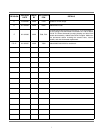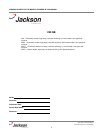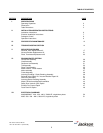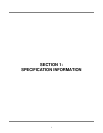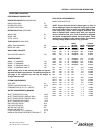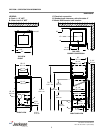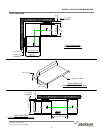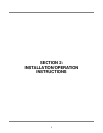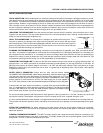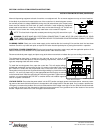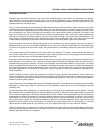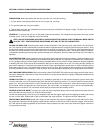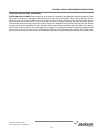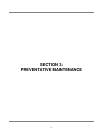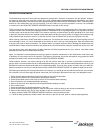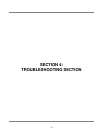
6
SECTION 2: INSTALLATION/OPERATION INSTRUCTIONS
INSTALLATION INSTRUCTIONS
VISUAL INSPECTION: Before installing the unit, check the container and machine for damage. A damaged container is an indi-
cator that there may be some damage to the machine. If there is damage to both the container and machine, do not throw away
the container. The dishmachine has been inspected and packed at the factory and is expected to arrive to you in new, undam-
aged condition. However, rough handling by carriers or others may result in there being damage to the unit while in transit. If
such a situation occurs, do not return the unit to Jackson; instead, contact the carrier and ask them to send a representative to
the site to inspect the damage to the unit and to complete an inspection report. You must contact the carrier within 48 hours of
receiving the machine. Also, contact the dealer through which you purchased the unit.
UNPACKING THE DISHMACHINE: Once the machine has been removed from the container, ensure that there are no miss-
ing parts from the machine. This may not be obvious at first. If it is discovered that an item is missing, contact Jackson imme-
diately to have the missing item shipped to you.
LEVEL THE DISHMACHINE: The dishmachine is designed to operate while being level. This is
important to prevent any damage to the machine during operation and to ensure the best results
when washing ware. The unit comes with adjustable bullet feet, which can be turned using a pair of
pliers or by hand if the unit can be raised safely. Ensure that the unit is level from side to side and
from front to back before making any connections.
PLUMBING THE DISHMACHINE: All plumbing connections must comply with all applicable local, state, and national plumb-
ing codes. The plumber is responsible for ensuring that the incoming water line is thoroughly flushed prior to connecting it to
any component of the dishmachine. It is necessary to remove all foreign debris from the water line that may potentially get
trapped in the valves or cause an obstruction. Any valves that are fouled as a result of foreign matter left in the water line, and
any expenses resulting from this fouling, are not the responsibility of the manufacturer.
CONNECTING THE DRAIN LINE: The drain for the 200 series models covered in this manual is a gravity discharge drain. All
piping from the 1 1/2” MNPT connection on the waste accumulator must be pitched (1/4” per foot) to the floor or sink drain. All
piping from the machine to the drain must be a minimum 1 1/2” NPT and shall not be reduced. There must also be an air gap
between the machine drain line and the floor sink or drain. If a grease trap is required by code, it should have a flow capacity
of 5 gallons per minute.
WATER SUPPLY CONNECTION: Ensure that you have read the section entitled
“PLUMBING THE DISHMACHINE” above before proceeding. Install the water supply line
(3/4” pipe size minimum) to the dishmachine line strainer using copper pipe. It is recom-
mended that a water shut-off valve be installed in the water line between the main supply
and the machine to allow access for service. The water supply line is to be capable of
20A5 PSI “flow” pressure at the recommended temperature indicated on the data plate.
In areas where the water pressure fluctuates or is greater than the recommended pres-
sure, it is suggested that a water pressure regulator be installed. The 200 series models
covered in this manual do not come with water pressure regulators as standard equip-
ment. Please notify Jackson if you have any questions.
Do not confuse static pressure with flow pressure. Static pressure is the line pressure in a “no flow” condition (all valves and
services are closed). Flow pressure is the pressure in the fill line when the fill valve is opened during the cycle.
It is also recommended that a shock absorber (not supplied with the 200 series models) be installed in the incoming water line.
This prevents line hammer (hydraulic shock), induced by the solenoid valve as it operates, from causing damage to the equip-
ment.
STEAM LINE CONNECTION: The steam machines come with lines by which the source steam needs to be connected.
Connect all steam lines to the machine as all applicable codes provide. See machine data plate for information concerning
steam flow pressure.
CHEMICAL DISPENSING EQUIPMENT: The 200LT machine requires that a separate chemical feeder be connected to it to
provide the required detergent, rinse agent, and sanitizer. This feeder needs to be able to operate against a head of 25 PSI
and provide 1.79 ml of a 10% Chlorine sanitizer per minute.
200 Series Technical Manual
7610-100-45-00 Rev. E (02/10/2006)
Frame with Adjustable Foot
Raise
Lower
Incoming Plumbing Connection



